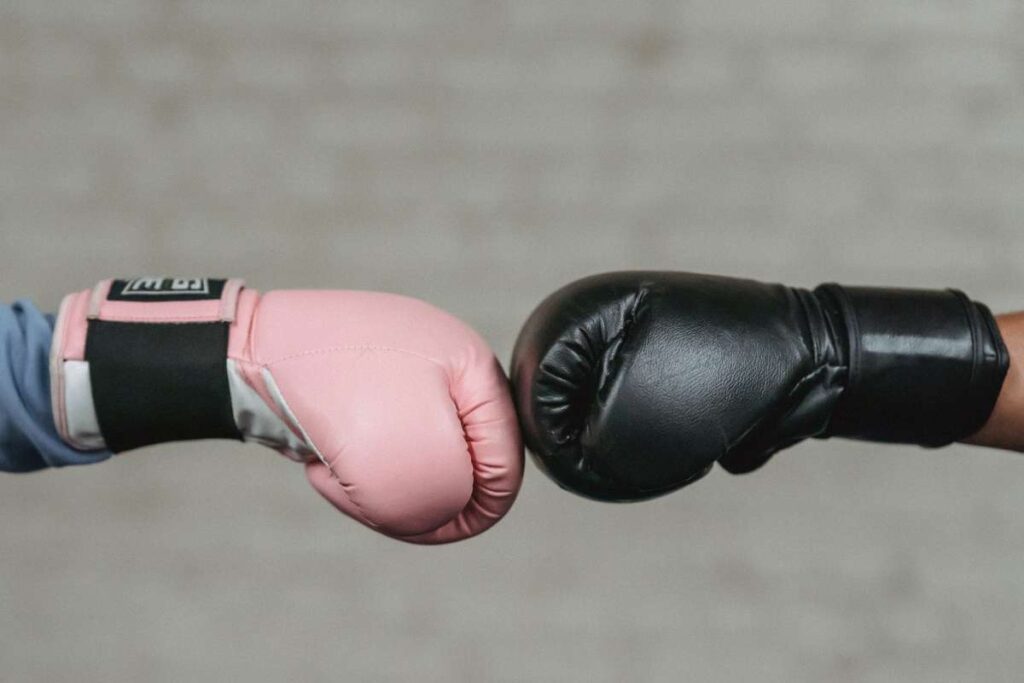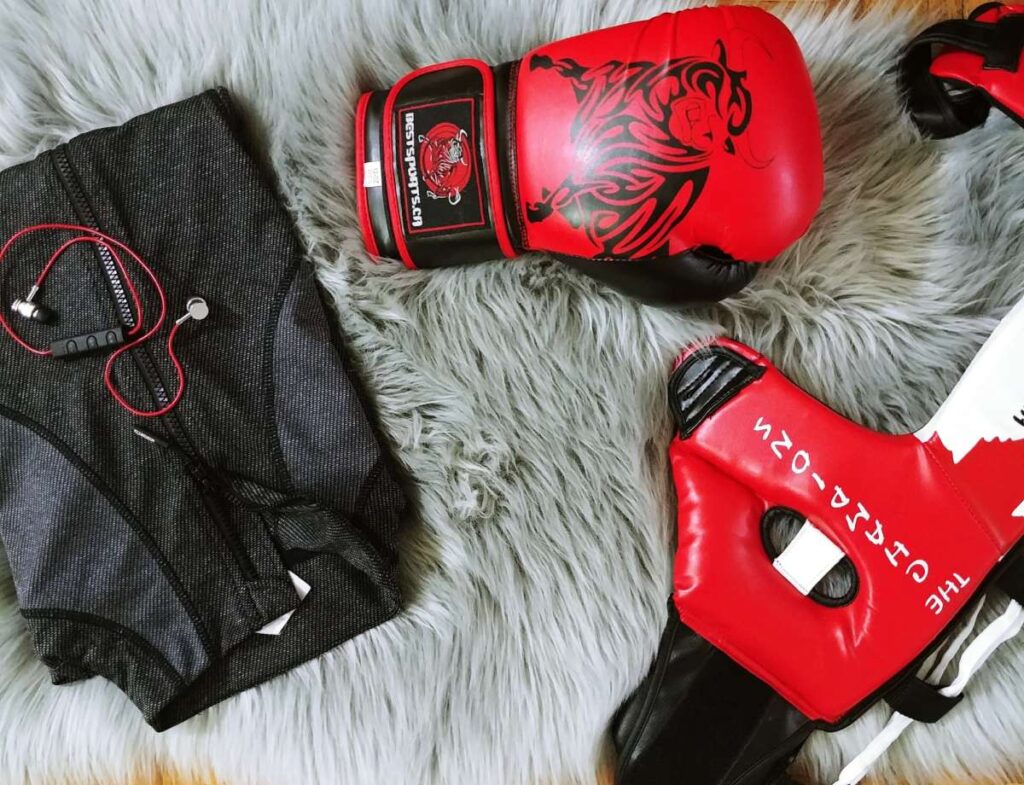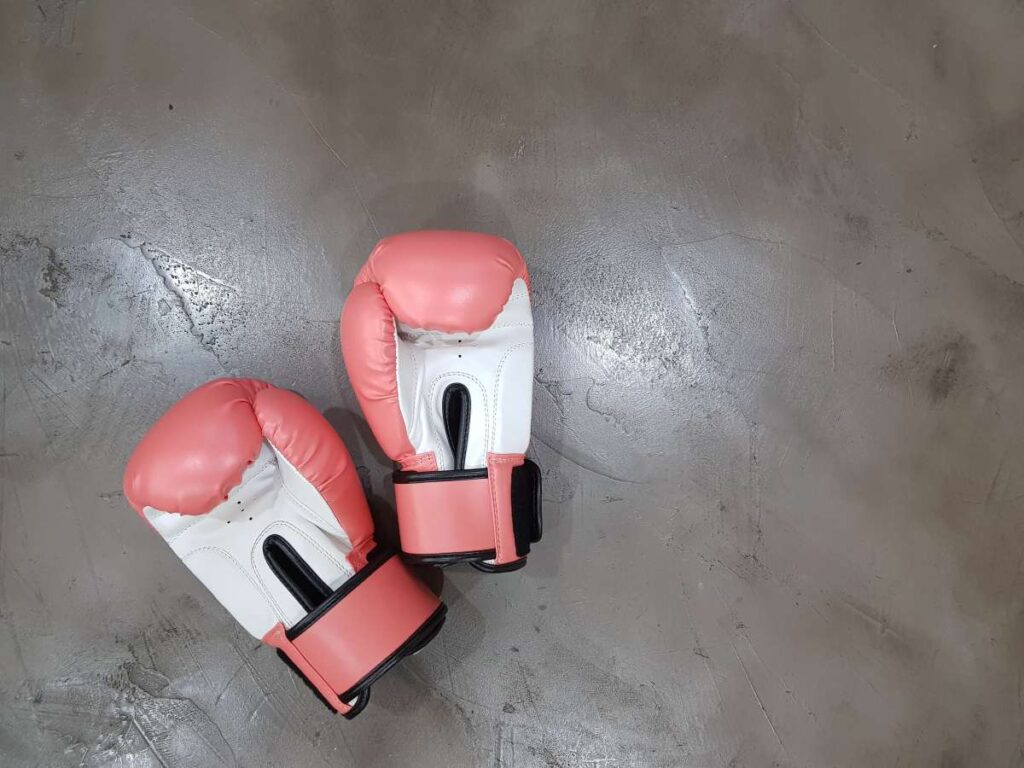The design of boxing gloves is straightforward and efficient, providing protection for both the puncher and the target of the blow. By prolonging each hit and dispersing the force of impact over a larger area than a naked fist would, boxing gloves lessen the force of blows. The more force is absorbed by the puncher's hands and the opponent's head, the smaller the glove.
Everyone enjoys playing boxing. The game has billions of admirers all over the world. This game is jam-packed with excitement, thrills, and action. It is undoubtedly the most deadly match in which fighters' lives are at stake.
Since shirts are not allowed in the game, boxers are not expected to purchase upper halves. Additionally, this kind of jersey's sleeves makes it difficult to move around freely. Boxing is, therefore, not light and is almost completely naked without jerseys.
Boxing gloves are primarily used in sports to protect the boxer's hand from harm. Sadly, despite the usage of gloves, hand injuries in combat sports are very frequent. Watching a match of bare-knuckle boxing is a great method to highlight how much the hands are protected by boxing gloves.
However, when we start to consider the long-term consequences, things start to get complicated. It's not quite as straightforward as you might believe, for instance, that the padding on the gloves will aid to lessen the immediate jolt from strikes to the head.
Consider how hard you would feel comfortable pounding a wall in the absence of hand protection. And now, if you knew your hands were well-protected, how hard could you strike it?
Much harder, yes?
Yes. The boxing glove covers more area, and as it offers more protection to the wearer, they're likely to throw their punches with more force than if they were wearing MMA gloves or bare-fisted.
A boxer wearing boxing gloves can hit harder because he has the gloves to protect his hands and can put all his weight and energy into his punches without worrying about breaking or hurting his hand. In addition, a gloved fist spreads the punch impact over a greater surface area than a bare fist.
Soreness from training is somewhat normal, but not taking proper care of your hands can lead to more injury—our best tips for preventing injury all place you at the centre of staying safe. To help keep you safe and your hands in good shape, follow the following tips; Don't over-train.
If you have an unusually large number of calcium deposits in your knuckles due to years of punching, you may have larger and stronger knuckles than the average person. Still, it's unlikely you'll see a noticeable difference in knuckle size from punching a bag.
A heavier glove does not hit harder, nor does it hurt the opponent more. Heavier gloves have more padding, designed to soften better the blow of a hard hit as you leverage your body weight into a punch.
FAQs
How Do Boxing Gloves Protect The Fighters?
Punches delivered while wearing boxing gloves will be more powerful. Many individuals neglect the fact that momentum is the key to striking power, though. Punching speed diminishes when wearing gloves, which significantly reduces punching force. As a result, your punches will have less effect than if you were using just your knuckles.
The impact area is also larger while punching while wearing gloves. The effect will be felt throughout a wider region in this way. The shock will be lessened as a result.
Protect Knuckles
Your hands get jolted when you punch a hard object, especially where your knuckles make contact. The addition of boxing equipment to your gloves for sparring helps lessen and diffuse the shock. Your knuckles won't take the full brunt of the collision in this way. The impact is significantly less than punching with bare hands, yet it is still the area that is most affected.
Additionally, when you punch with a glove, the impact area is larger. This lessens the force of the shocks that hit your hands.
Wrist Support
A boxer's gloves serve primarily as protection from excessive wear and as wrist support.
Since their invention in ancient Greece, boxing gloves have seen a significant amount of development.
For safety reasons, boxing gloves are now required for competition.
Before a bout, the boxing gloves must be thoroughly checked to ensure they are in working order.
Boxing gloves are designed to shield the hands of the user, allowing them to throw punches without risking any form of fractures or wounds.
Even while some fighters wear the greatest padding brands of gloves, some nevertheless have hand injuries. Therefore, this does not imply that the gloves always fail to fulfil their intended function.
It is crucial to make sure that your technique is flawless and that your hands and wrists are strong because of this.
Imagine that you are deadlifting at the gym to put this into perspective.
Because they require the utilisation of so many distinct muscles, deadlifts are among the most difficult functional exercises. Sadly, one thing they can do is cause lower back pain. If your deadlift form is poor, it doesn't matter how thick or tight your belt is — you're still quite likely to sustain an injury over time.
For boxing gloves, the same rule applies. Boxing gloves can cause injuries due to poor technique, brittle hands, or flimsy wrists.
Our sensitive hands suffer broken hand bones when we strike someone else in the head with them. Wearing boxing gloves is therefore crucial for anyone practising a combat sport like boxing.
Decreasing the Likelihood of Cuts
We occasionally witness matches with bloodying noses, yes? Can you now predict what would happen if we used our bare hands? Punching with bare hands reduces the impact area, but the force on the impact surface increases dramatically, resulting in a bloodbath.
Do Boxing Gloves Soften the Hit?
Punching Speed
Speed kills in the ring because the harder your punch hits, the faster you throw it. Boxers typically shadowbox without gloves because they can move their arms more quickly without the extra weight of the gloves. But boxing gloves offer them significant hand protection when it's time to engage in a genuine fight. Boxers can hit as forcefully as possible without worrying about hurting their hands when wearing gloves, despite the fact that this results in slower movement and less impact than when striking barehanded.
Cushioning
Larger, thicker-padded gloves over smaller ones provide greater protection. This is thus because the force of an impact is the force dispersed over time. Thus, the initial impact of the punch is reduced, and the opponent is given the opportunity to roll with the punch and lessen its concussive effect the longer it takes to deliver its force.
Surface Area
Larger, heavier boxing gloves feature more surface area than smaller gloves or bare hands in addition to cushioning. While padding lengthens the duration of a strike, a punch's force is dispersed over a larger surface area, reducing its impact per square inch. If you strike someone as hard as you can without using a glove, the damage you cause would be more concentrated in a smaller space.
Which Boxing Gloves Should I Use?
Purchase a pair of high-quality boxing gloves if this is your first time trying out the sport. The main goal of boxing gloves is to protect your hands while working out on a heavy bag.
There are variants of boxing gloves with and without moulded thumbs available on the market. To get maximum protection during your boxing sessions, it's a good idea to get boxing gloves with moulded thumbs.
Do I Have To Wear Hand Wraps?
Yes, if you take your profession seriously. Your hands are one of your most important assets as a boxer, so you should take every precaution to keep them safe. Cutting corners in this area will not help you save time. Always encircle your hands and precisely align each bone in your fist.
How to Choose the Right Size Boxing Gloves
Having the proper equipment in your bag is the first step to striking the weight room. When boxers train, having high-quality gloves can help keep their hands cosy and safe. Boxing gloves work best when they are the right size, just like other safety equipment. Additionally, there are numerous types of boxing gloves, from basic training models to those designed specifically for fight nights.
We must break them down into their component parts in order to select the best boxing gloves. So what material do boxing gloves contain? Typically, a trained craftsman and a sewing machine are used to stitch together real or synthetic leather for the outside. Foam cushioning is layered beneath the leather to cushion impacts and offer protection.
Longer-lasting stiffness and shape retention are characteristics of high-quality foam cushioning. They don't pack a lot of heat during fighting because they are not excessively dense yet are firm enough to absorb impacts.
That is a condensed view of boxing glove design, but it provides guidance on making the best choice. Real leather is frequently the better choice because of its sturdiness, texture, and appearance. However, contemporary microfiber that mimics fake leather rivals the price of genuine leather. Microfiber leather is more affordable, has higher breathability, is simpler to maintain, and has antibacterial characteristics.
Just a brief question regarding leather and maintenance: how are boxing gloves cleaned? The easiest technique to keep your boxing gloves in good condition is to wipe them down on the inside and outside shortly after a workout to get rid of extra moisture. This aids in keeping the gloves clean and odour-free.
Weight is a crucial consideration when selecting the best boxing gloves. What factors affect weight in boxing gloves, and why does it matter? This will be covered in the section after this.
FOR MEN:
You can use an 8 or 10oz for bag work in the 51-65kg weight range. 16 ounces is the optimal size for sparring.
If you weigh between 63 and 76 kg, go with 16oz for sparring and 12oz for bag training.
The 74-90kg weight range fits the same description.
The main difference is that it's advised to use an 18oz for sparring if you weigh more than 88 kg.
FOR WOMEN:
We advise using a 6oz glove for women under 45 kg when working with bags.
Even though it's a kid's glove, it will have the greatest fit for your hand.
While a 12oz, 14oz, or 16oz can be utilised for sparring.
You can spar with a 16oz and hit bags with an 8oz when you weigh between 45 and 50 kg.
The suggested weight for bag work is just 10oz, and the 50–60 kilogramme range is quite comparable.
A 12 oz glove is ideal for bag work, and a 16 oz glove is suitable for sparring for women over 60 kg.
Four (4) Things To Consider When Choosing Boxing Gloves
Material - What the gloves are made from and their durability
Padding - Thickness and location of the protective cushioning
Intended Use - What the gloves are designed for
Weight - The correct weight for intended use
What Types Of Boxing Gloves Are There?
Training/Bag Gloves
Boxing gloves are frequently advertised by manufacturers as bag gloves or training gloves. These are standard all-purpose boxing gloves. Although they are occasionally designed for bag and pad work, they are typically quite adaptable and helpful in other types of training. As a result, you'll probably be using a pair of these for most of your work. However, they are frequently referred to as boxing gloves; not all general-purpose gloves are designated as training gloves.
- Usually made of leather
- Thick foam padding over the knuckles
- Stiff wrist support with lace-up or hook-and-loop (Velcro) closure
- Good for bag and partner training
- Protects knuckles, hands, and wrists
Sparring Gloves
Boxing gloves are designed to protect you and your sparring partner, not to take their life. Although many companies produce gloves designed specifically for the sport, any pair of boxing gloves will work for sparring (as long as they are the right weight). The padding in sparring gloves is typically softer or more cushioned than in training gloves, with greater distribution to lessen the force of blows. Sparring gloves are frequently offered in a variety of weights, but depending on your body weight, you should only use those that weigh 14 oz or more.
- Softer padding for lower impact
- Good for sparring with a partner
- Heavier weight, 16 ounces or more
Amateur Competition Gloves
Even though you'll probably never need to buy a pair for yourself, it's still important to understand what they are. The gloves used in amateur boxing matches typically fit a specified mould and are provided by the promotion to the competitors. Depending on the fighter's corner, the gloves are typically red or blue. It's also common for the glove's knuckle region to be highlighted. These characteristics greatly improve the judge's ability to score the fight.
- Similar to training gloves with stiffer padding
- Lace-up closure is likely required
- Closely regulated in competitive boxing
Mexican Boxing Gloves
Boxing gloves in the Mexican style are more streamlined than competition or practice gloves. Many boxers still wear these nowadays. These were particularly sought-after when the majority of conventional boxing gloves were still bulky and unwieldy.
- Subcategory of competitive gloves with more compact design and snug fit
- Sometimes made from traditional materials such as horsehair
If you're wondering what types of boxing gloves you need, here are a few main things to consider:
- Are the gloves for competition or training?
- If competition, what weight of gloves is required for your weight class?
- If training, what will the gloves be used for? Bag/pad work, sparring, or a bit of both?
- Are you going to be using it for a sport where you'll need to block/catch kicks?
- Are you buying specific gloves for each activity or one pair which you can use for everything?
You should be able to determine the kinds of boxing gloves you require keeping these in mind along with the information provided above.
Fighting/Competition Gloves
Boxing fight nights employ competitive or fighting gloves. Depending on the style of fight and the promoter, the weight of the boxing gloves is often 8oz, 10oz, or 12oz. Lace-ups and ordinary gloves are the two different categories of fighting boxing gloves. Since the laces can be adjusted for a better handful, lace-up gloves offer a more flexible fit. They can be laced up by a trainer, and they can be used for sparring. A generic fighting glove, on the other hand, resembles a training glove you may use in the gym.


